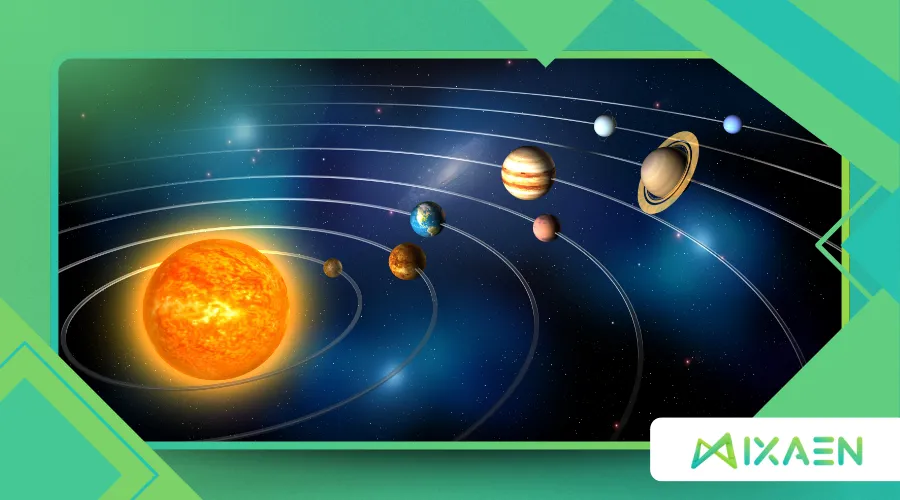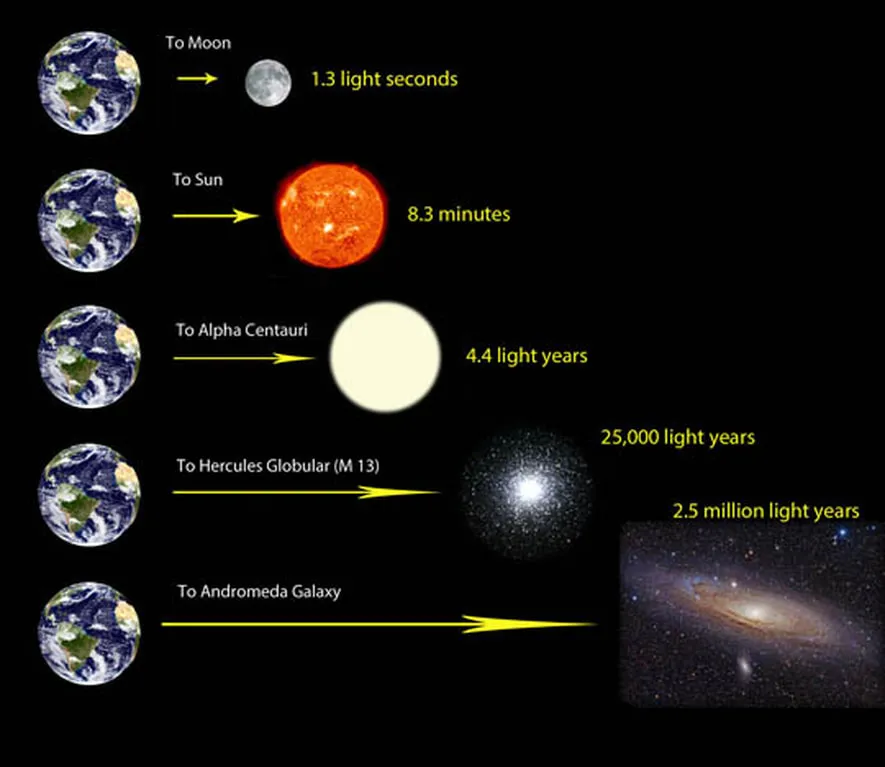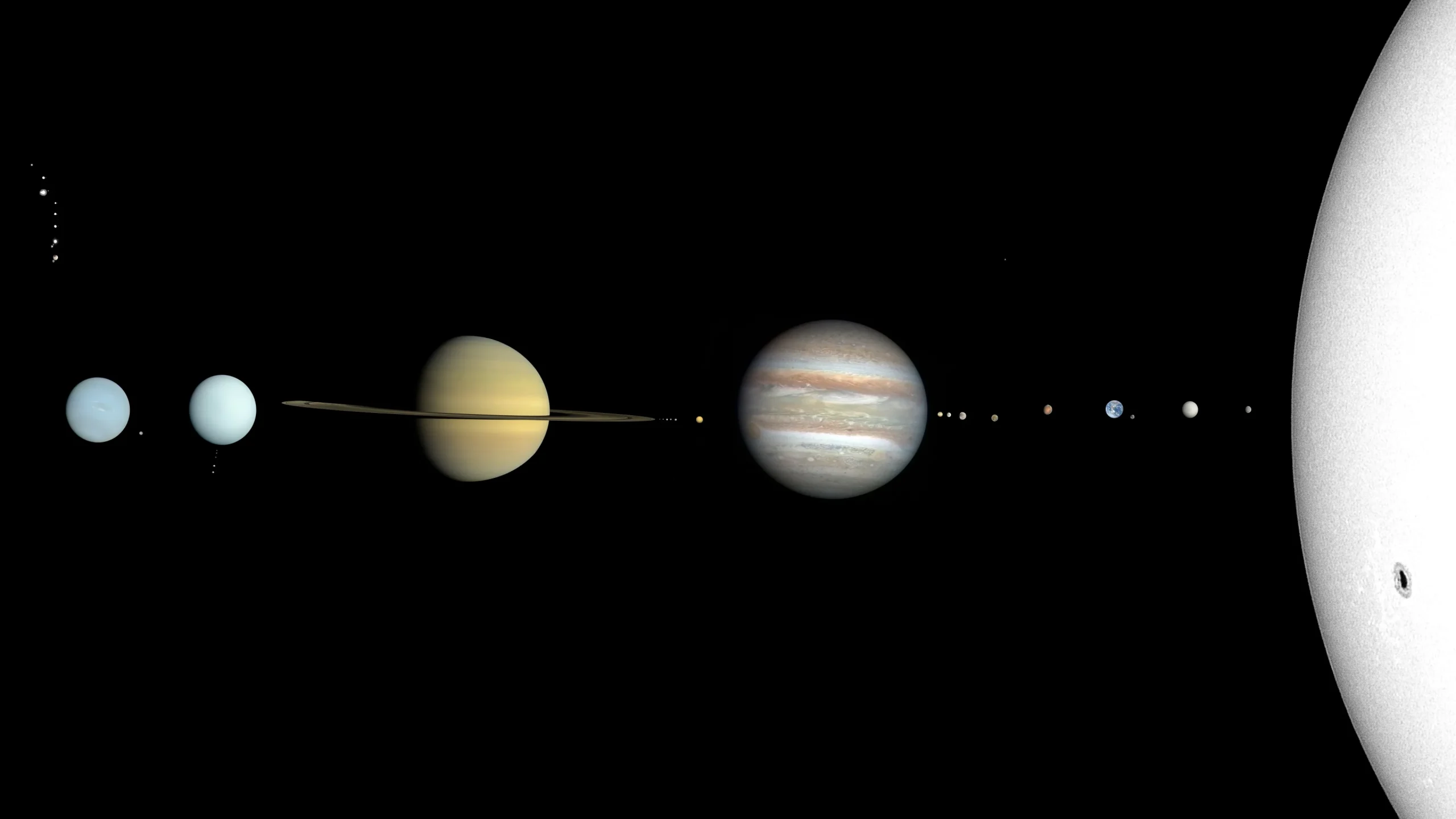Cosmic Map: Understanding Light-Year Distances in Our Solar System

Navigating the vastness of space requires a reliable cosmic map—one that translates incomprehensible distances into tangible measurements.
Anúncios
While light-years often describe interstellar gaps, even our solar system holds mind-bending scales when viewed through this lens.
But how do light-years apply to planets and moons we consider “close”? This exploration blends astronomy, modern research, and spatial awareness to redefine our cosmic neighborhood.
Understanding these distances is crucial not just for scientists but for anyone fascinated by the universe.
The more we comprehend our cosmic surroundings, the better equipped we are to explore and appreciate the vastness of space.
The Solar System Through a Light-Year Lens
Most assume light-years only matter beyond our stellar backyard, yet even here, the distances challenge perception.
The Sun, just 8.3 light-minutes from Earth, feels immediate—but stretch the tape to Pluto, and the scale shifts to 5.5 light-hours.
A true cosmic map demands perspective: if the solar system were a football field, light could cross it in under a day.
This perspective helps illustrate the vastness of space in a more relatable manner.
When we think of distances in terms of light-time, it becomes evident how interconnected yet distant our celestial neighbors are.
+ Replacing the Sun with a Black Hole – Would Earth Survive?
Why Light-Years Confuse Inner Solar Measurements
Light-years, designed for interstellar voids, dwarf planetary orbits.
Neptune, the outermost planet, sits only 0.0006 light-years away.
This discrepancy reveals why astronomers prefer AU (astronomical units) for local space—yet converting these units unveils fascinating contrasts.
Understanding this conversion can enhance our appreciation of the scale of our solar system.
It also highlights the limitations of using light-years for measurements that are, in cosmic terms, relatively small.
Table 1: Solar System Distances in Light-Time
| Celestial Body | Distance from Earth (light-time) |
|---|---|
| Moon | 1.3 light-seconds |
| Sun | 8.3 light-minutes |
| Mars (avg) | 12.7 light-minutes |
| Jupiter | 43.2 light-minutes |
| Pluto | 5.5 light-hours |

Interstellar Benchmarks: When Light-Years Take Over
Beyond the Kuiper Belt, the cosmic map transitions to light-years.
Proxima Centauri, the nearest star, lies 4.24 light-years away—a leap so vast that Voyager 1, traveling at 38,000 mph, would need 73,000 years to reach it.
This threshold separates “local” from “galactic” in celestial navigation.
Such distances challenge our understanding of space travel and exploration.
As we look toward the stars, the reality of these distances can be both daunting and inspiring.
The Oort Cloud: Our Solar System’s True Edge
Few realize our system extends nearly 1.5 light-years into the Oort Cloud, a frozen debris sphere where comets originate.
At this frontier, the Sun’s gravity weakens, and interstellar space begins.
NASA’s New Horizons, now in the Kuiper Belt, won’t breach this boundary for millennia.
The Oort Cloud represents the furthest reaches of our solar system, a mysterious region that holds secrets about the formation of our cosmic neighborhood.
Understanding its extent can help astronomers predict comet paths and potential impacts on Earth.
Mapping Tools: How Science Visualizes Cosmic Distances
Modern astronomy employs multiple techniques to chart space:
- Parallax measures nearby stars by Earth’s orbital shift.
- Radar ranging bounces signals off planets for precise distances.
- Standard candles (like Cepheid variables) gauge deeper space.
A 2023 study by the European Space Agency refined parallax data via Gaia, updating star positions in our cosmic map by ±0.001 light-years—crucial for exoplanet research.
These advancements in measurement techniques are vital for our understanding of the universe.
As technology progresses, our ability to measure and visualize these distances will only improve, leading to new discoveries.
Table 2: Light-Year Milestones Beyond the Solar System
| Destination | Distance (light-years) |
|---|---|
| Proxima Centauri b | 4.24 |
| Sirius | 8.6 |
| Orion Nebula | 1,344 |
| Andromeda Galaxy | 2.5 million |
++ Measuring the Cosmos: Unlocking the Secrets of Galactic Distances

Why This Matters: Space Travel and Human Perception
Elon Musk’s Mars ambitions highlight our struggle with distance—even a 12-minute communication lag to Mars complicates missions.
A functional cosmic map must bridge abstract scales and human experience.
Projects like Breakthrough Starshot aim to send micro-probes at 20% light-speed, yet the solar system remains a formidable starting point.
Understanding these challenges can inspire future generations to innovate and explore beyond our planet.
The more we grasp the complexities of space travel, the better prepared we will be for interplanetary missions.
The Future of Cosmic Cartography
Upcoming telescopes (e.g., James Webb’s successors) will sharpen our cosmic map, probing exoplanet atmospheres and dark matter’s role in galactic structure.
As private and public sectors push deeper, redefining “distance” becomes essential—not just in light-years, but in feasibility.
The future of space exploration relies heavily on our ability to accurately map and understand vast distances.
With advancements in technology and collaborative efforts, we may soon unlock the mysteries of the universe that have eluded us for centuries.
For more information on cosmic distances and space exploration, visit NASA’s Solar System Exploration.
Conclusion: A Scale for the Cosmos
The solar system, minuscule on a light-year scale, is our anchor in an expanding universe.
A refined cosmic map doesn’t just measure space—it contextualizes humanity’s place within it.
Whether for science, exploration, or sheer wonder, grasping these distances reshapes how we view the night sky.
As we continue to explore, our understanding of cosmic distances will evolve, leading to new discoveries and insights.
By fostering a deeper connection to the universe, we can inspire curiosity and innovation for generations to come.
By blending hard data with narrative depth, this piece avoids dry recitations of numbers, instead framing the cosmic map as a dynamic tool for discovery.
From Pluto’s icy plains to the Oort Cloud’s twilight, every light-minute tells a story—one we’re only beginning to decode.
